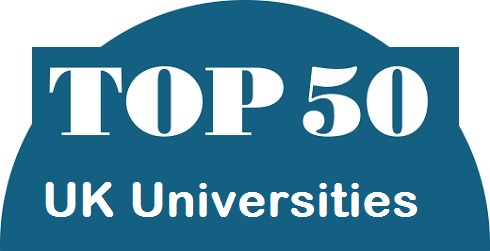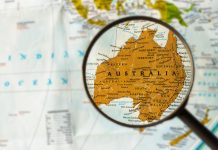Australia University Rankings 2017-2018- The Rankings of australian universities has been revealed for session 2017-2018. Australia is one of the top three study destinations for international students. There are various ranking systems like QS World University Rankings, Times Higher Education (THE) Rankings, Shanghai Academic Ranking of World Universities (ARWU), US News Rankings, etc. Each of these systems has a specific method for ranking universities. 7 of Australia’s universities feature among the top 100 universities in the world and 23 Australian Universities feature in the top 500 Universities in the World list.
Australia University Rankings 2017-2018:
The table below lists top 10 Universities in Australia and their corresponding World University Rankings.
| Sr. No. | Name of the University | QS World University Ranking | THE Rankings | ARWU Rankings (2016) | US News Rankings |
| 1 | University of Melbourne | 41 (tie) | 33 (tie) | 40 | 36 (tie) |
| 2 | University of Sydney | 50 | 60 (tie) | 82 | 45 (tie) |
| 3 | University of Queensland | 47 (tie) | 60 (tie) | 55 | 52 |
| 4 | Monash University | 60 | 74 | 79 | 79 |
| 5 | Australian National University | 20 | 47 | 77 | 80 (tie) |
| 6 | University of New South Wales | 45 | 78 (tie) | 101-150 | 80 (tie) |
| 7 | University of Western Australia | 93 (tie) | 125 | 96 | 95 (tie) |
| 8 | University of Adelaide | 109 (tie) | 142 | 101-150 | 152 (tie) |
| 9 | Macquarie University | 240 (tie) | 251-300 | 201-300 | 267 (tie) |
| 10 | James Cook University | 367 (tie) | 251-300 | 201-300 | 273 |
After looking at the top 10 Australian Universities and their rankings in the world, let us look at each of these universities in detail in terms of their academic reputation.
University of Melbourne: The University of Melbourne is a public institution that was founded in 1853. The university has a reputation for being research oriented and has five research institutes that encourage involvement of the industry, government, nonprofit organizations and university researchers. The university ranks 33 and 36 in THE and US News Rankings respectively. The rank drops down to 40 in ARWU and 41 in QS Rankings.
University of Sydney: The University of Sydney is the oldest university in Australia and it was founded in 1850. This university has more than 70 research centers including the Brain and Mind Centre and the China Studies Centre to name a few. This university ranks 45 in US News, 50 in QS and 60 in THE rankings. This score drastically drops down to 82 according to the ARWU rankings.
University of Queensland: This public institution was founded in 1909 and has three main campuses – the St. Lucia campus, the Gatton campus famous for agriculture and veterinary sciences and the Herston campus which has clinical health facilities for the school. Queensland ranks among the top 55 world universities with a score of 47 in QS, 52 in US News and 55 in ARWU rankings. According to THE rankings, this university ranks 60 among top world universities.
Monash University: This public institution was founded in 1958 and it is named after the famous Australian army leader and engineer, Sir John Monash. Monash University ranks 60 in QS, but this score drops down to 74 in THE and 79 in ARWU and US News rankings.
Australian National University: This public institution is also one of the oldest institutions of Australia and it was founded in 1946. Residential facilities are available for graduate as well as undergraduate students. This university gets a good ranking on QS and ranks 20, but ranks within the top 50 and 80 top universities as per the other rankings.
University of New South Wales: With a high number of international students and international staff, the University of New South Wales is ranked 45 according to QS, 78 as per THE rankings and 80 in US News rankings, but only manages to feature among the top 150 world universities in ARWU rankings.
University of Western Australia: The University of Western Australia is a comprehensive and progressive university with a high focus on research. The University of Western Australia ranks 93 in QS, 95 in US News and 96 in ARWU rankings, but experiences a drop in THE with a score of 125.
University of Adelaide: This is also one of the oldest universities of Australia and it was established in 1874. The university initially offered degrees in arts, science, law, medicine, music and continues to do so. This university ranks 109 in QS and falls within the top 152 universities according to the other ranking systems.
Macquarie University: Although this university has come up recently, it has a reputation for excellence and is known to be a progressive institution not only in Australia but worldwide. Macquarie manages to obtain a position among the top 300 universities in the world across the four ranking systems.
James Cook University: James Cook University is Queensland’s second oldest university and it is highly reputed for excellence in research. James Cook University falls within the top 300 universities in THE, ARWU and US News rankings, but gets a rank of 367 in QS World University Rankings.
Let us now look at the eligibility to get admission in Australian universities. The eligibility criteria for admission depend on the level of study. Each university has different specifications. Hence, it is advisable to go through the academic requirements carefully before applying.
Some general requirements for admission in Australian Universities are:
Fluency in English: The medium of instruction in most Australian universities is English. However, the requirements vary according to the level of the course that you wish to study.
Academic Performance: Academic performance is an important criterion that is considered during the screening process.
Work Experience and Training: Most Universities do not require students to study pre-requisite subjects or have specific work experience.
Higher Education: In order to obtain admission in an Australian undergraduate course, you will need to have an Australian Senior Secondary Certificate of Education or its equivalent for international students.
Post-graduation: In addition to successful completion of an undergraduate degree, most universities prefer some research experience.
Students could also take some bridge courses to meet the entry requirements. The bridge courses are usually one year long.
In addition, you will have to meet specific criteria for obtaining a student visa for studying in Australia. These include an electronic Confirmation of Enrollment (eCoE) certificate, sufficient funds, meeting health requirements and having proficiency in the English language.





















































